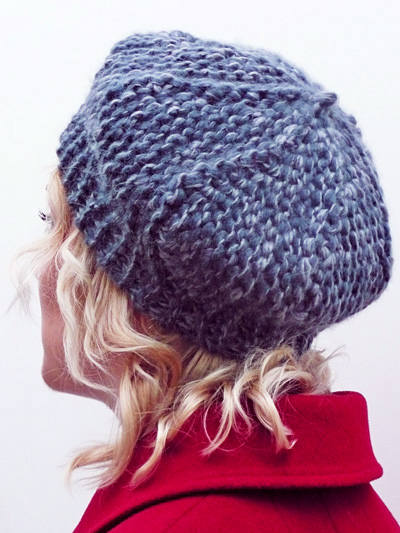  Break
yarn, leaving a 1-yard tail. Thread tail on yarn needle. Break
yarn, leaving a 1-yard tail. Thread tail on yarn needle.
Remove waste yarn from CO edge and place resulting live
sts on needle, beginning from center of hat (so that tip
of needle is at outer edge).
Hold needles parallel, with
needle with working yarn attached held to the front, with
needle tips pointing to the right.
Graft seam as follows:
Step 1: Insert needle into first stitch on front needle
from back to front, as if to purl.
Step 2: Insert needle into first stitch on back needle
from front to back, as if to knit. Drop first stitch from
back needle.
Step 3: Insert needle into first stitch on back needle
from back to front, as if to purl.
Step 4: Insert needle into first stitch on front needle
from front to back, as if to knit. Drop first stitch from
front needle.
Repeat Steps 1-4 until all sts have been grafted.
Weave yarn through stitches at center of hat and pull
tight to close up hole.
Weave in ends.
Optional: Make a stalk by pulling a short loop of yarn
through to the right side at the centre of crown, and rub
sides of loop together with damp fingertips to felt.
| 
